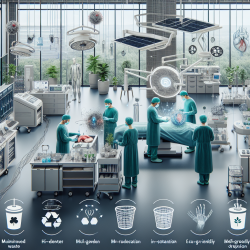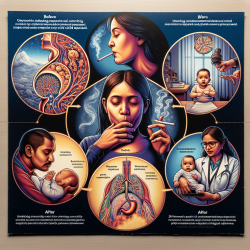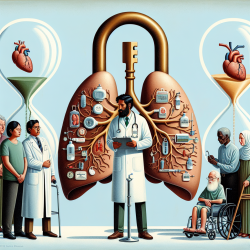Creating Green Teams in Intensive Care Units: A Path to Sustainability
As a speech-language pathologist dedicated to data-driven decisions and improving outcomes for children, I understand the importance of creating sustainable practices within healthcare systems. The research article "Create intensive care green teams, there is no time to waste" highlights the urgent need for Intensive Care Units (ICUs) to form green teams to address environmental sustainability. This blog will explore how practitioners can implement these findings to improve their skills and contribute to a more sustainable future.
The Urgency of Sustainability in Healthcare
According to the research, greenhouse gas (GHG) emissions must decrease by 80–90% by 2050 to limit global temperature increases to under 1.5°C and mitigate climate change consequences. Healthcare systems, particularly hospitals, are significant contributors to GHG emissions. Within hospitals, ICUs are carbon hotspots, contributing three times the GHG emissions as acute care units per bed day. This highlights the urgent need for ICUs to transition towards environmentally sustainable practices.
Why Green Teams?
Green teams are essential for promoting sustainability within ICUs. They provide legitimacy and permanency to sustainability initiatives, increase awareness about individual actions, and advocate for unit-level changes. By forming or joining a green team, healthcare workers can influence clinical practices, healthcare organizations, standards, and policies to promote sustainability.
Creating a Successful Green Team
The research outlines several practical steps for creating successful green teams:
- Identify Multidisciplinary Green Champions: Passionate individuals, often nurses, are key to leading ICU green teams.
- Grassroots Drive: A grassroots approach, supported by leadership, is crucial for success. Leadership can strengthen groups by providing autonomy, positive acknowledgment, and appropriate financial resources.
- Set SMART Goals: Map existing initiatives, plan next steps, and set specific, measurable, achievable, realistic, and timely goals.
- Embed Sustainability in Quality Frameworks: Make sustainability a part of daily ICU processes and procedures.
- Communicate Widely: Use various platforms like ward meetings, newsletters, and social media to share initiatives and updates.
- Celebrate Success: Promote achievements, keep initiatives fun, and show appreciation for all ideas.
Practical Actions for Green Teams
ICU sustainability is a colossal task requiring mass transformation. Green teams can focus on the following actions:
- Low Hanging Fruit: Initiatives like lights and electronics switch-off campaigns, recycling, and carpooling.
- Big Impact Actions: Target sectors with high carbon emissions, such as heating and power consumption, and advocate for renewable energy sources.
- Symbolic Actions: Visible changes that demonstrate a culture of sustainability, like vegetarian catering for events.
Measuring Success
Data collection and monitoring are crucial for assessing the progress and effectiveness of sustainability initiatives. Life cycle assessments (LCA), carbon footprint, and energy efficiency data can support these metrics. Successful examples include:
- Recycling stations diverting 5 tonnes of waste from landfills annually in a Melbourne ICU.
- Staff education and process changes improving waste disposal by 32.3% in a São Paulo ICU.
- Supply stocking changes reducing unused equipment waste by 80% in a Canadian ICU.
To read the original research paper, please follow this link: Create intensive care green teams, there is no time to waste.










